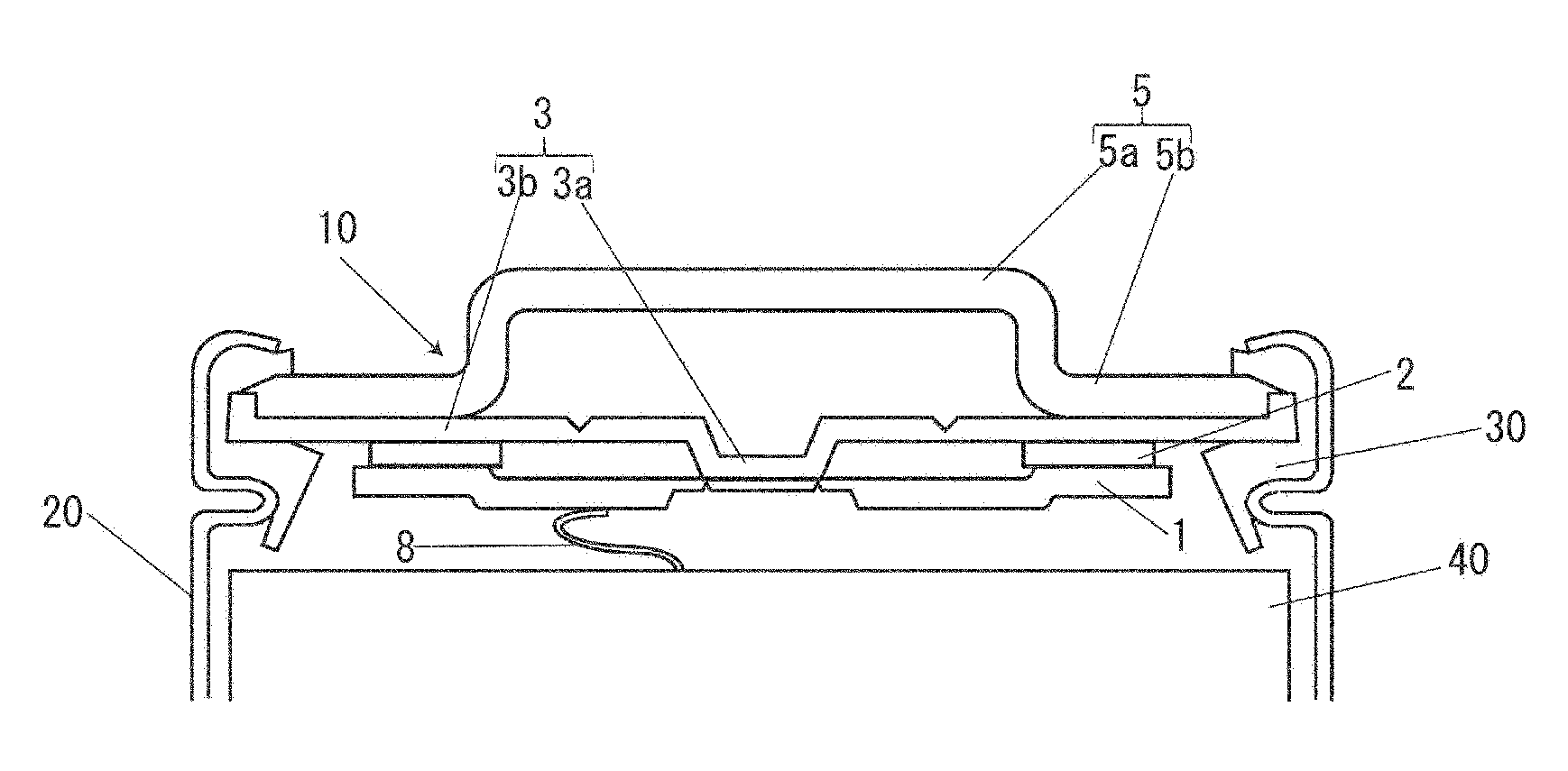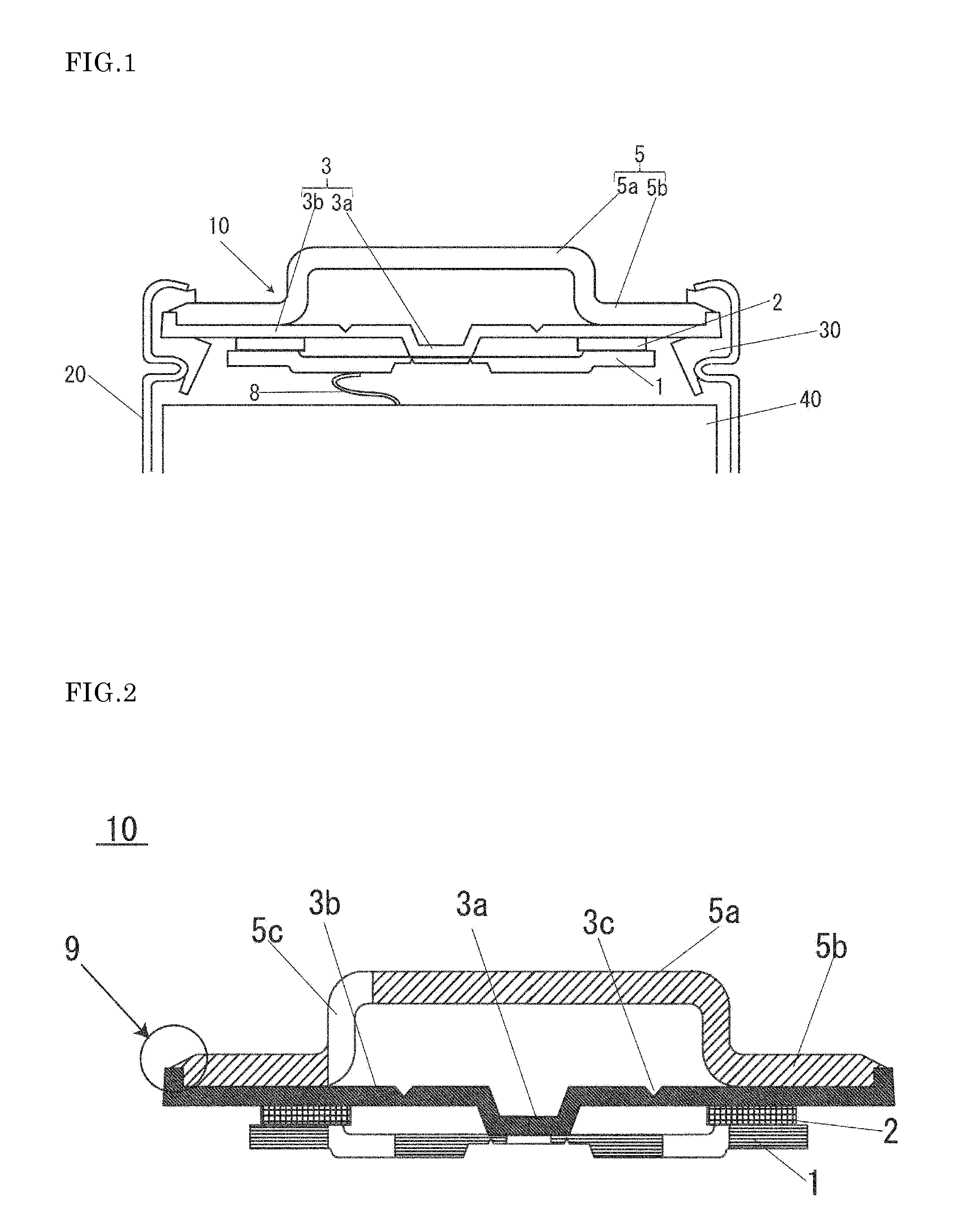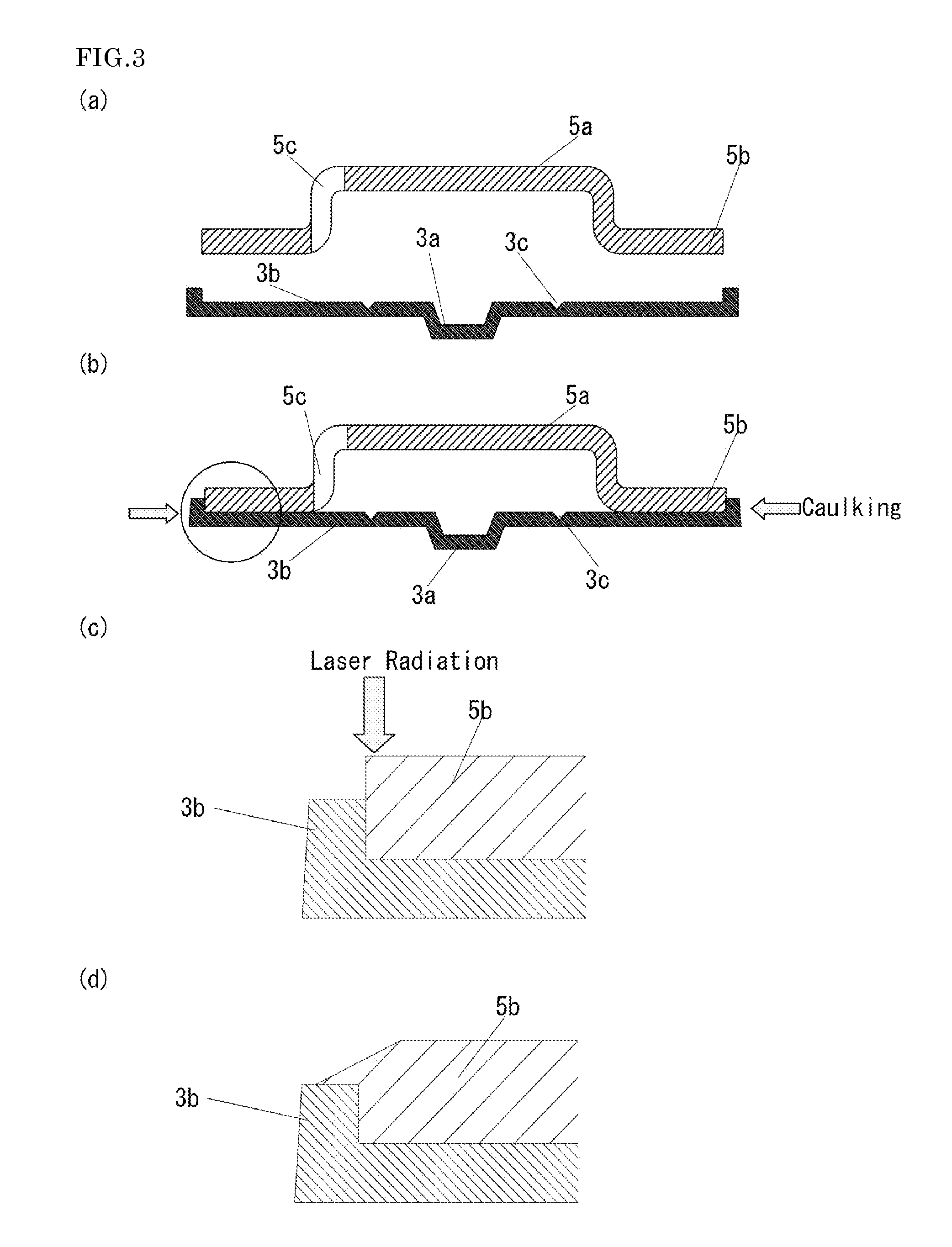Sealed cell and method for manufacturing same
a technology of sealed cells and welded parts, applied in the direction of secondary cells servicing/maintenance, cell components, cell component details, etc., can solve the problems of difficult welding to each other, reducing production efficiency, and melting point and electrical characteristics, and achieve high melting point, high productivity, and high melting point
- Summary
- Abstract
- Description
- Claims
- Application Information
AI Technical Summary
Benefits of technology
Problems solved by technology
Method used
Image
Examples
first embodiment
[0033]As an embodiment of the present invention, a lithium-ion secondary cell will now be described in detail as follows with reference to the drawings. FIG. 1 is a partially enlarged sectional view of a sealed cell of the present embodiment, and FIG. 2 shows a sealing body used for the sealed cell of the present invention.
[0034]As shown in FIG. 1, the sealed cell of the present embodiment includes an outer can 20 accommodating an electrode assembly 40 and a non-aqueous electrolyte, and a sealing body 10 secured by caulking to the opening of the outer can 20 with an insulation gasket 30 interposed therebetween.
[0035]As shown in FIGS. 1 and 2, the sealing body 10 used for the sealed cell of the present embodiment includes a terminal plate 1 electrically connected to either the positive or negative electrode via an electrode tab 8; a terminal cap 5 having an external terminal 5a projecting toward the outside of the cell; a safety valve 3 disposed between the terminal plate 1 and the t...
example 1
[0074]The reason for this result is assumed as follows. In Example 1, the safety valve and the terminal cap are welded to each other throughout the outer periphery, leaving no gap therebetween. In Comparative Example 1, on the other hand, the safety valve and the terminal cap are welded to each other only between the pin-shaped projections and the counterbored holes, leaving gap on the outer periphery.
[0075]Welding Reliability Test
[0076]The cells of Example 1 and the cells of Comparative Example 1 were charged at a constant current of 1 It (1250 mA) until the voltage reached 4.2 V, and then at a constant voltage of 4.2 V until the current reached 0.02 It (25 mA). After this, these cells were placed in a constant temperature chamber in which the temperature changed from −30° C. to 70° C. in 0.5 hours, and were subjected to 400 cycles when a temperature change from −30° C. to 70° C. and then back to −30° C. is defined as one cycle. The resistance between the safety valve and the termi...
PUM
| Property | Measurement | Unit |
|---|---|---|
| thickness | aaaaa | aaaaa |
| diameter | aaaaa | aaaaa |
| height | aaaaa | aaaaa |
Abstract
Description
Claims
Application Information
 Login to View More
Login to View More - R&D
- Intellectual Property
- Life Sciences
- Materials
- Tech Scout
- Unparalleled Data Quality
- Higher Quality Content
- 60% Fewer Hallucinations
Browse by: Latest US Patents, China's latest patents, Technical Efficacy Thesaurus, Application Domain, Technology Topic, Popular Technical Reports.
© 2025 PatSnap. All rights reserved.Legal|Privacy policy|Modern Slavery Act Transparency Statement|Sitemap|About US| Contact US: help@patsnap.com



